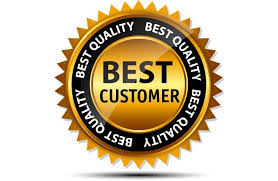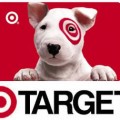Focusing on your best customers is critically important. However, many companies do not do this.

Not All Customers Will Be Your Best
There’s a lot of emphasis in marketing and sales to acquire new customers. What businesses often fail to recognize is that the time, effort and people resource given to acquisition is at the expense of current customers demanding attention. The probability of acquiring a new, profitable customer is nearer to zero compared to tending and building business with current customers.
If a business can not figure out how to create better, more profitable business with a current customer, how does the company expect to do any better with a brand new customer?
I’ve published 6 Keys to Sustainable, Repeatable Revenue Growth. In that article a number of steps are explained to help companies. I encourage you to review that article as a complement to the ideas in this one.
As for focusing on a company’s best customers, there are particular opportunities to help companies thrive with existing customers. Taking advantage of these steps provide two- fold benefits.
One is a business will better understand the current customer base; and Two, will be better able to identify what a good new customer looks like.
Here’s a simple, relatively low tech way to better focus on your best customers. Just use a spreadsheet to organize information that any finance director or accountant will have for the business.
- Review the sales and profitability of every customer the business has had over the last three years. Rank order the Revenue in descending order. Then do the same for profitability. Compare the profit % contribution of each customer relative to revenue.
- Sort the customers into segments, usually, thirds, fourths or fifths based on a revenue amount, but you can choose other factors considered important.
- Look for patterns in customer sales.
- Who is most consistent every year in terms of sales and profitability?
- Which customers show the most growth? Which are in decline?
- What are the projects, products, and services the customer is typically buying? What are the commonalities between groups of customers? What are the exceptions or outliers from the patterns?
- Who in the company is most responsible for that customer sale and relationship? By the way it’s not always the salesperson.
- Find out why certain customers behave a certain way.
- Consider an additional screen for the best customers:
- Is the customer a good and valued relationship that the company enjoys?
- Does the customer let the company do its best work? Work that your company would like to tell others about?
- Is the customer relationship profitable and growing? Sometimes the biggest and most profitable customers are not necessarily satisfying in terms of the work or relationship. Other times there are customers you have that are not as good as you think, and you likely need to address some issues. So don’t rate a customer solely on the basis of how much revenue and profit they contribute.
This level of fact, based on the numbers segmentation of the customer base, gives the company leaders and team visibility into pattern recognition to delve deeper into regarding the company’s success with customers. You’ll be able to:
- Define who are the company’s best customers? What is the profile of a good to best customer? How do we grow other customers into the best category? How do we go to the marketplace to acquire more customers like our best ones?
- Ask questions of the customers that are relevant to their needs and desires from your company. For example, what can be done to improve service and opportunity to fill other customer needs?
- Develop customer specific account plans to build the relationship and business. Identify in those relationships what marketing and sales programs will be more productive with customers.
As to how a company can create programs designed to reward their best customers there are numerous strategies and tactics. The foundation principles are pretty straightforward. A company should typically look at Recency, Frequency, and Monetary (RFM). Depending on the business there might be more importance on one factor than the other.
Around this principle companies build loyalty/reward programs. These types of programs apply to both consumer and business to business markets. For example, in a business to business environment a company can provide incentives based on a customer’s volume or profitability, and how often they place orders and the size over a period of time.
In the consumer markets we see credit card and other frequent use programs. The airline industry beginning in the 70s and 80’s really spawned the frequent buyer programs for practically all industry today.
This video and article speaks to a program Delta Airlines introduced in 2014 as an innovation to their customer frequent flier program. The airline industry and Delta are an insightful case study to learn from. Using robust databases Delta is able to more precisely target rewards for customers for not just miles traveled but also money actually spent. This interview explains how they go about this, and what they learn about their customers.

The main thrust of Delta’s efforts is to shift from rewarding customers on the basis of only miles traveled toward value to the airline in terms of dollars spent. This provides incentives on a scale better suited to the customer-airline interactions for profitability, miles flown, premium vs. economy transactions, and the customer life time value. On the last point this might be defined as the value of the customer in some cases over many years that are approaching or exceeding, e.g. million miles flown.
In this new customer loyalty effort Delta’s product and reward benefits are more fairly distributed among its customers in, for example, seat upgrades, ticket awards.
In summary, these ideas and principles are time tested and can be applied to any market or industry. It begins with an analysis of recent sales business performance, and an objective evaluation of the customer relationships and their value to the company.
Peter Klinge, Jr. is an executive who works with small to medium sized companies to define strategy and implementation to help companies achieve growth objectives.





Found this Best Customer Focus related NYT article interesting. Topic is about how Disney used Dynamic Pricing to drive revenue of Lion King back to the top of Broadway theater sales. Readers may notice how this applies to your online purchases of many goods, services you shop for…
http://www.nytimes.com/2014/03/17/theater/ticket-pricing-puts-lion-king-atop-broadways-circle-of-life.html?hpw&rref=arts&_r=0
I’ve seen several businesses flame out simply because they don’t tend their sales pipelines. Certainly tend to your existing customers but know that tomorrow could be your last day.
I think your most salient point when it comes to working with existing clients is your customer screen –
1) Is the work profitable?
2) Do you enjoy the people you work for/with?
3) Is the highest and best use of each company’s time?
I know you can have success if you have two of three while if you only have one, you should consider firing that client. We applied that screen to our client base over the last 18 months and ended up a slightly smaller company but more profitable and much happier.
Thanks for the response and sharing of your own experience on the subject